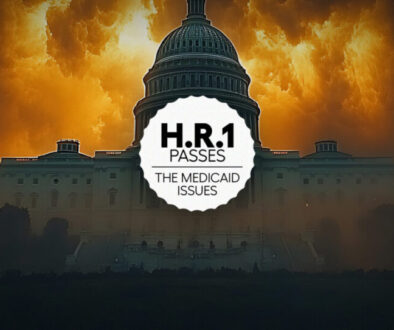Secure 3.0: What would a successor to SECURE look like?
The SECURE Act was signed into law in December 2019. SECURE 2.0 became law three years after that. Could SECURE 3.0 be in the works?
One financial industry trade association has urged the Biden administration to work with Congress to take up legislation that would further alleviate workers’ and retirees’ retirement anxiety. Meanwhile, a representative from another industry association said he believes any further iteration of SECURE must address America’s growing long-term care crisis.
The Insured Retirement Institute sent a letter to the administration, promoting the benefits of SECURE 2.0 but stating that “more action is needed to soothe middle-class workers’ and retirees’ anxiety about accumulating sufficient savings to last throughout their retirement years.” IRI cited an April Gallup survey that revealed 43% of respondents said they would have enough money to live comfortably in their retirement years.
IRI’s letter to the administration highlighted four measures from among 28 in the association’s 2023 Federal Retirement Security Blueprint. The four proposals would substantially expand access to workplace retirement plans and facilitate access to protected, guaranteed lifetime income solutions.
The four measures that IRI said can be taken as “next steps on the road to further enhancing and strengthening Americans’ retirement security” are:
The Lifetime Income for Employees Act of 2023
This bill allows retirement plan sponsors to use lifetime income solutions that have delayed liquidity features and can provide better returns as qualified default investment alternatives for a portion of contributions made by participants who have not made retirement plan investment selections. It significantly improves the availability of protected, guaranteed lifetime income products that can help retirement savers produce sustainable income during their retirement years and reduce the anxiety many have about the possibility of not having enough saved to sustain them throughout their retirement years.
The Retirement Fairness for Charities and Educational Institutions Act of 2023
This bill amends federal securities law to ensure that 403(b) retirement plan participants have parity with all other retirement plan participants to choose more cost-efficient investment options that use collective investment trusts and unregistered insurance company separate accounts, including those that offer protected, guaranteed lifetime income solutions. Amending current federal securities law would level the playing field among all other private sector and public sector retirement plans and non-profit 403(b) retirement plans.
It also offers 403(b) plan participants who are employees of charities, public schools, colleges and universities the opportunity to choose to invest in lower and more cost-efficient investment options, including those that offer protected, guaranteed, protected lifetime income solutions that are available to other retirement plan participants.
The General Account Products Clarification Act of 2022
This bill provides the legal certainty needed for insurers to continue offering stable value and principal preservation funds products. These general account products allow participants to shield all or a portion of their account balances from the risk of loss while providing income that accrues at a steady, predictable rate to retirement plan providers. The bill does not affect ERISA protections for participants in retirement plans that offer these products as investment options but only clarifies the law to remove the legal uncertainty that now exists and allow retirement savers, particularly those close to retirement or early into their retirements, to continue to have access to these valuable products to achieve their retirement goals.
The Automatic Retirement Plan Act
This bill addresses the retirement coverage gap and the anxiety many of America’s workers feel about outliving their retirement savings. The bill generally requires all but the smallest of employers to maintain an automatic retirement savings plan, in which employees would be automatically enrolled with the ability to opt out. The bill also requires that participants with account balances of $200,000 or more be given the choice to receive up to 50% of their vested balance in the form of a protected, guaranteed lifetime income product.
One potential impediment
The association also noted one potential impediment that the administration is considering that IRI believes could prove troublesome and constrain the positive impact of SECURE 2.0 on furthering retirement security.
The Department of Labor’s most recent regulatory agenda contains a new proposal, the Conflict of Interest in Investment Advice Rule, expected in August, that seeks to further expand the federal and state framework to regulate the standard of conduct for financial professionals who provide personalized advice about investments and insurance to retail consumers. A federal appeals court vacated a similar DOL rule in 2018, and no evidence has been produced to show that the current regulatory framework is ineffective in protecting retirement savers, IRI said.
IRI believes the anticipated regulation could particularly affect access to affordable professional financial advice for Black and Latino workers and retirees, and increase the wealth gap for these workers.
“Federal and state regulators are actively and aggressively enforcing the existing regulatory framework of the best interest standard,” IRI president and CEO Wayne Chopus said. “Any expansion of the current regulations would stem the progress made in strengthening retirement security for many middle-class workers, retirees, and their families. It would deprive them of access to advice about retirement savings strategies and the right to work with their preferred financial advisor on terms that best fit their situations and needs.”
Chopus added, “IRI stands ready to work with your administration and Congress on implementing the new retirement security law and advancing additional legislation to help America’s workers and retirees achieve a financially secure and dignified retirement.”
Future SECURE must address long-term care
Although SECURE and SECURE 2.0 went a long way toward helping Americans save for retirement, “we haven’t fully solved the problem” of ensuring financial security in retirement. That was the word from Armstrong Robinson, chief advocacy officer with Finseca.
Robinson praised SECURE and SECURE 2.0 as two of the few areas in Washington that received bipartisan support in an ever-more-divided Congress. “But I think there’s still a tremendous appetite to do more,” he said.
Long-term care is the biggest issue that a future iteration of SECURE could address, Robinson said.
“It’s probably the one issue we discuss most with our members,” he said. “It’s such a crucial human need. In addition, Medicaid is the fastest growing line item in every state budget in the country. And the biggest driver of that growth is long-term care expense.”
Robinson said Finseca would like to see a potential SECURE 3.0 “provide meaningful incentives toward the purchase of qualifying long-term care coverage, because we think that takes away or substantially mitigates a huge risk that most Americans face.”
A potential SECURE 3.0 also must address the instability in Social Security, Robinson said. In March, the trustees who oversee the Social Security trust fund projected the fund will be depleted in 2034.
“Congress must tackle that in a meaningful way, but we don’t know how that will look,” he said.
Susan Rupe is managing editor for InsuranceNewsNet. She formerly served as communications director for an insurance agents’ association and was an award-winning newspaper reporter and editor. Contact her at Susan.Rupe@innfeedback.com. Follow her on Twitter @INNsusan.
© Entire contents copyright 2023 by InsuranceNewsNet.com Inc. All rights reserved. No part of this article may be reprinted without the expressed written consent from InsuranceNewsNet.com.
The post Secure 3.0: What would a successor to SECURE look like? appeared first on Insurance News | InsuranceNewsNet.



